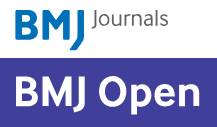Authors
Affiliations
Abstract
Sarcopenic obesity (SO) is characterised by a concomitant high fat mass (FM) and low fat free mass (FFM) leading to an increased cardio-metabolic risk. This analysis aims to estimate the SO prevalence in Iranian adults and evaluate the association of SO with metabolic syndrome (MetS) risk. This cross-sectional analysis included 4296 subjects (age 35-70 years, 55.2% females). Body composition parameters, measured by bioelectrical impedance included: FM, FFM, appendicular lean mass (ALM) and skeletal mass index. SO was classified according to five criteria: (1) FM%-SMI; (2) FM%-ALM/% weight (wt%); (3) FM%-ALM/body mass index (BMI); (4) Residuals of ALM and FM and (5) FM/FFM Ratio. Multivariate logistic regression was applied to explore the association between SO models with MetS risk stratified by gender. Receiving operating characteristic (ROC) curves were used to identify the best FM/FFM ratio cut-off value for detecting MetS cases in males and females. The prevalence of SO varied between 4% and 26% depending upon the classification method. The prevalence of MetS was 12.8% and 31.6% in males and females, respectively. SO models based on ALM/wt% and FM/FFM ratio showed the strongest association with MetS risk in males (OR: 11.5, 95%CI: 7.5-17.7, p < 0.001 and OR: 10.1, 95%CI: 6.9-14.7, p < 0.001, respectively) and females (OR: 4.1, 95%CI: 3.0-5.6, p < 0.001 and OR: 4.6, 95%CI: 3.5-5.9, p < 0.001, respectively). SO is a prevalent condition in an adult Iranian population and the ALM/wt% and the FM/FFM ratio models of SO appeared to be associated with higher MetS risk.
Keywords: Low- and Middle-income Countries; metabolic risk; obesity; sarcopenia.

